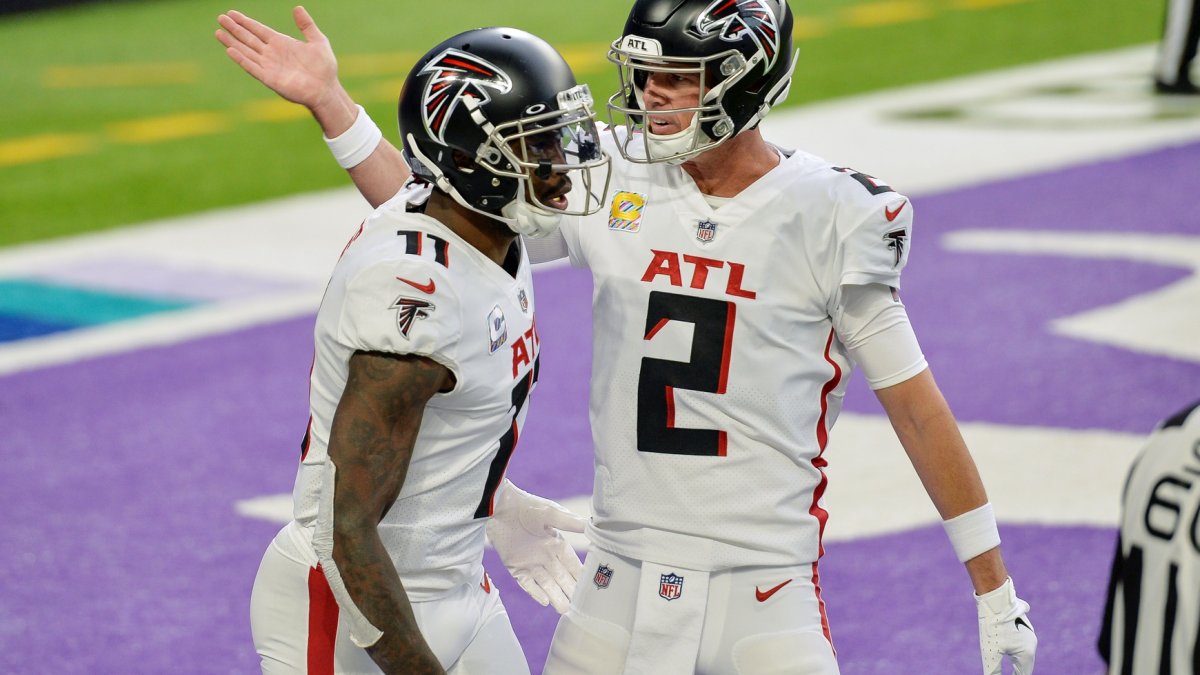Stacking is essential to success in DFS GPPs. The average user who submits a handful of lineups on any one DFS slate doesn’t stack nearly enough in their lineups. The art of stacking is a way to increase variance, which is the only option that offers enough upside to win a GPP tournament.
An overlooked approach is the game-level stack, which takes not only a quarterback and pass-catching option but also runs it back with a pass-catcher or running back from the opposing team.
We see in our introductory article on stacking that if we hit on the correct quarterback and wide receiver to stack, a player from the opposing team is typically going to be worthwhile to pair with this combination to apply more lineup correlation into your roster builds.
This provides inherent upside to our lineups — if we hit on the correct quarterback, two or more additional lineup spots are typically hit on by the simple fact that they are highly correlated to our quarterback play. If your quarterback is a miss, the rest of your lineup is likely in a similar situation, as it is hard to pull off a quality finish in a GPP contest with a dud at the signal-caller position.
Focusing on this approach of identifying quarterbacks who could be hits, we have built a model to project who is most likely to finish as the highest-scoring quarterback on the main slate based on fantasy projections, opponent-adjusted grades and betting market lines. Utilizing correlations for how fantasy points are distributed at the game level, we can then see the correct framework for how to approach roster construction for a game stack.
WEEK 10 REVIEW
Almost 75% of the top 100 lineups in the DraftKings Milly Maker contest had Kyler Murray or Josh Allen at quarterback. Eight of the top 10 lineups had one of these two along with DeAndre Hopkins and Cole Beasley. It was the perfect example of why this article is written each week, as game stacks on the right core are the easiest route to the top of the leaderboard. We labeled Larry Fitzgerald as a reliable inclusion but clearly identified the wrong No. 3 receiver — as Beasley at 4.5% ownership was the key to this particular game stack.
Other suggestions didn’t live up to top billing, as we didn’t have back-and-forth scoring occurring in any other matchup. A couple of blowout offenses trickled into the top 10 without a run-it-back stack, but these took nearly perfect builds at the running back and third wide receiver positions.
The high-scoring totals are in the prime-time TV slot, which makes the Week 11 main slate wide open, with only two totals above 50. There is no obvious chalk, so if you have conviction about a certain play or game, load up on that situation.
Aside from the aforementioned two game totals above 50, the other matchups are between 45-49, which means numerous opportunities will go overlooked. This looks like the perfect week for a game that not many people are targeting to explode with the highest fantasy production. It is favoring multiple lineups using a variety of game stacks with the same core of running backs and third wide receiver.
Let’s take a closer look at the games that this model believes have the best opportunity to produce the most fantasy points at each position.
HIGH-OWNED OPTIONS
ATLANTA FALCONS @ NEW ORLEANS SAINTS
The highest total on the main slate initially dropped 2.5 points on the open after the Drew Brees injury news, but it has since rebounded. We have flipped percentages from what we would normally expect, with 84% of the cash on the over but 56% of the tickets on the under. Our predictive model offers no real lean on the total, with both defenses in the top half of the league in our opponent-adjusted rankings.
Exclusive content for premium subscribers

WANT TO KEEP READING?
Dominate Fantasy Football & Betting with AI-Powered Data & Tools Trusted By All 32 Teams
Already have a subscription? Log in



 © 2025 PFF - all rights reserved.
© 2025 PFF - all rights reserved.